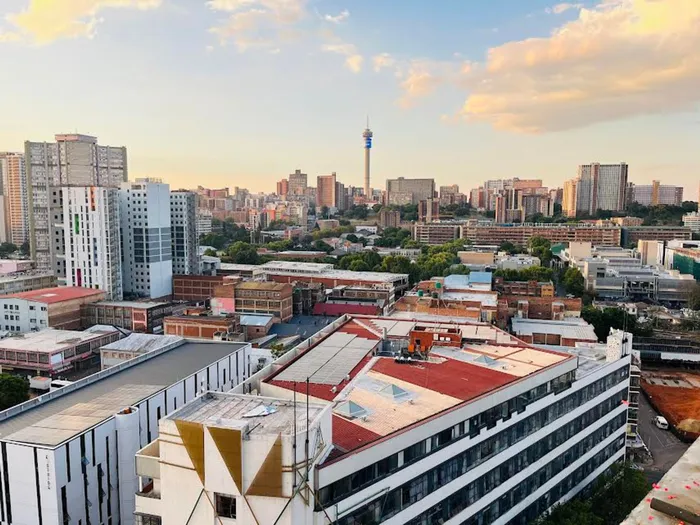South Africa's migration trends: moving beyond the 'Cape Town or bust' mentality

Gauteng remains the country’s economic powerhouse, contributing over a third of South Africa’s GDP.
Image: IOL
The migration story in South Africa is more nuanced than the long-running “Cape Town or bust” narrative.
While lifestyle migration to coastal cities continues, we are now seeing a measurable flow of professionals and companies back to Gauteng, shared Bryce O’Donnell, the managing director of Abcon Developments.
“This reverse semigration is being driven by opportunity. Gauteng remains the country’s economic powerhouse, contributing over a third of South Africa’s GDP, and that economic gravity is hard to ignore,” O’Donnell said.
He said employment growth in the province, as highlighted in the latest Stats SA survey, highlights this reality.
For investors, he said this return of skilled professionals translates directly into demand for well-located, premium office space.
“Vacancy rates that were stubbornly high during the pandemic are now easing, and quality decentralised nodes such as Rosebank, Midrand and Houghton are experiencing year-on-year rental growth.
"In essence, the return of talent and business activity to Gauteng has rebalanced the risk-return equation for investors, making office real estate here a more attractive proposition than it has been in years.”
While the latest wave of semigration has seen a net influx of new residents – and homebuyers – to the Western Cape in recent years, it is Gauteng that is experiencing by far the largest growth in population, noted Dr Andrew Golding, chief executive of the Pam Golding Property group.
“Despite the market focus on ongoing semigration to the Western Cape, the latest StatsSA data reveals that Gauteng is experiencing by far the strongest growth in population and, as a consequence, housing demand,” Golding said.
He said, according to StatsSA’s recently released 2025 Mid-Year Population Estimates, South Africa’s total population has risen to 63.1 million people – a growing percentage of whom live in Gauteng (25.4% in 2025) and the Western Cape (12%).
Absa Home Loans told this publication that while it did not track the motivations driving outflows in property ownership across provinces, they have observed net outflows of property owners from Gauteng in each quarter over the past five years.
“This most recent quarter was slightly higher than the previous quarter, but remains lower than the trends seen throughout 2024. This means that while outward migration from Gauteng has slowed down when compared to last year, the net migration remains negative.
"It is therefore, in our view, challenging to confirm a reversal of the semigration trend out of the province at this stage.”
Abcon Developments said the post-pandemic workplace is not about size but adaptability. The commercial real estate property developer said companies are less inclined to tie up working capital in owned buildings, especially in a volatile economy. Leasing premium office space allows them to remain agile while still accessing the benefits of top-tier locations and facilities, it said.
For many corporations, the developer said the priority is creating environments that attract talent back into the office.
“Employers are reshaping policies to emphasise in-office collaboration, which in turn puts pressure on landlords and developers to provide layouts, amenities and shared spaces that are far more sophisticated than before.
"By leasing, businesses can scale up or down more easily, test new working models and focus capital on their core business rather than long-term property assets.”
It added that this flexibility is particularly critical in urban hubs like Johannesburg and Pretoria, where access to transport, lifestyle amenities and connectivity to other businesses matter more than ownership. The net effect is that demand for high-quality leased space in the right node is rising, while ownership is taking a back seat, Abcon said.
O’Donnell said office markets do not exist in isolation, but they are part of the broader urban fabric. The MD said that where regeneration projects are happening, they are seeing office demand follow.
“Johannesburg’s continued reinvestment into precincts such as Rosebank and Sandton has proven that when transport, lifestyle and security are prioritised, tenants respond.”
He said infrastructure investment also plays a pivotal role. “Gautrain connectivity, road upgrades, and fibre rollouts have fundamentally changed the desirability of certain nodes.
"Hatfield, for example, has emerged as a key hub precisely because it balances accessibility with lifestyle and academic appeal, thanks to proximity to the university and the Gautrain. These are the ecosystems where businesses want to be, and investors are responding accordingly.”
Going forward, the developer said the real test is ensuring new developments are part of sustainable, integrated precincts where people want to live, work and play. When those conditions are met, demand is amplified, it said.
According to Abcon, demand has shifted toward mixed-use precincts that offer more than just square metres of office space.
“Our developments in nodes such as Sandton Gate and Hertford are designed around the principle of 'everything connects'. Businesses want an address that signals premium quality, that provides retail convenience, that integrates residential options and that reduces the friction of daily life for their employees.”
It said the workplace has become an experience - that means investing in green spaces, wellness amenities and sustainable design, alongside robust digital infrastructure.
When employees can grab a coffee, fit in a workout and access transport options all within the same precinct, it becomes significantly easier for employers to attract them back to the office.
“Our experience has shown that when you create a precinct that genuinely integrates work, lifestyle, and community, demand follows naturally. That is why mixed-use nodes are outperforming traditional standalone office buildings in today’s market,” O’Donnell added.
Independent Media Property
Related Topics: